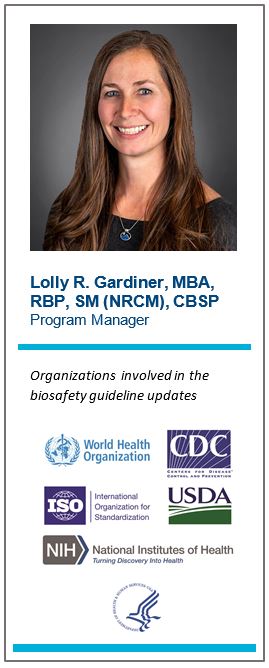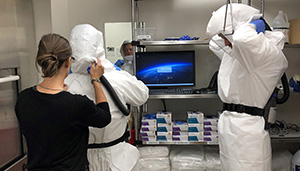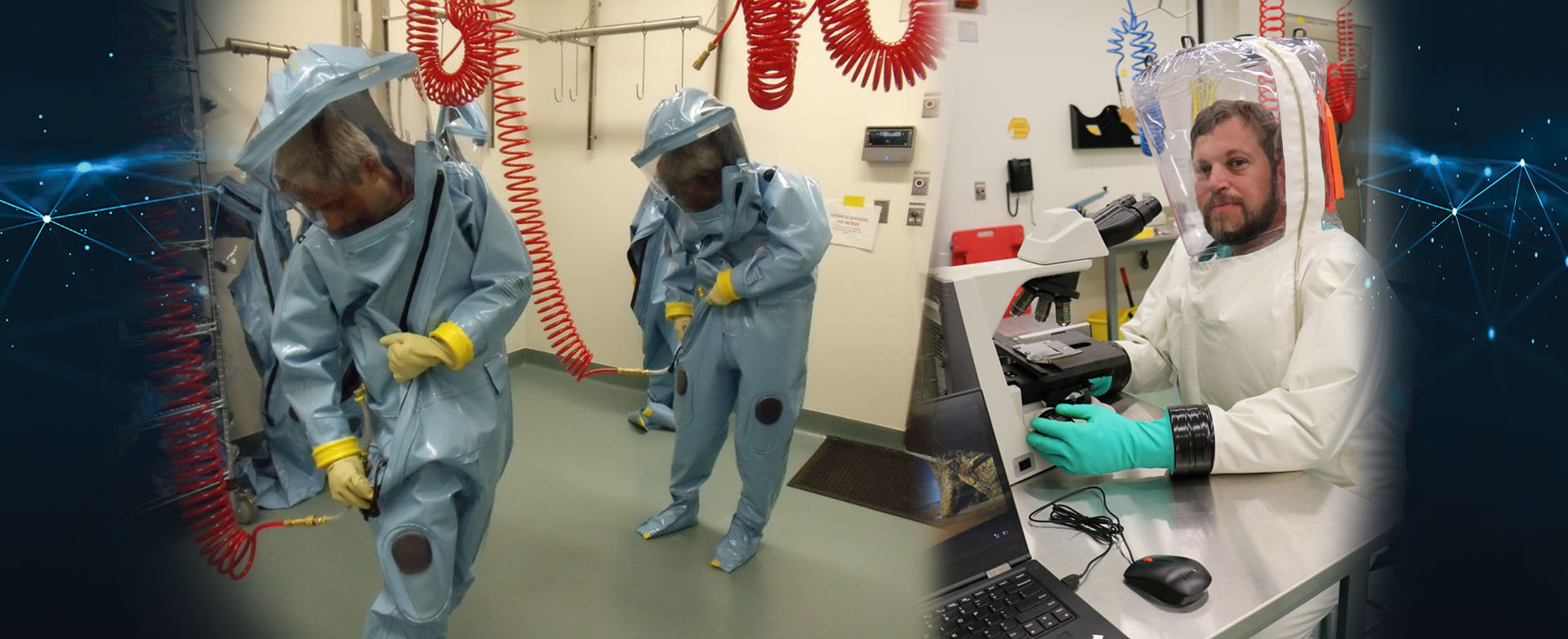
2020 promises to be a banner year for changes to the global biosafety and biorisk management landscape.
The imminent release of highly anticipated updates to foundational U.S. and World Health Organization (WHO) biosafety guidelines, combined with the late-2019 publication of the first international standard for laboratory biorisk management, means that biological laboratories around the world will be reevaluating their existing biosafety programs this year.
MRIGlobal can boast more than 75 years supporting internal and client biological laboratory research, and over 20 years supporting biosafety and biorisk management program development in the U.S. and internationally. Our credentialed safety experts are at the forefront of our company’s efforts to remain compliant in our own facilities, and we rely on them to continue providing relevant, up-to-date site assessments and training around the world.
Here’s what we’re looking forward to in 2020:
Publication of the sixth edition of the Biosafety in Microbiological and Biomedical Laboratories (BMBL)
The BMBL, a joint publication by the U.S. Centers for Disease Control and Prevention and the National Institutes of Health, has served as the cornerstone of safety practices in U.S. biological laboratories since its initial publication in 1984. The contents of the current edition, first published in 2007, reflect many changes in the biosafety field related to the 2001 anthrax attacks. The sixth edition is expected to leverage the lessons learned from the implementation of these changes. The text of the new edition is not yet available, though certain editors have provided some hints about what changes to expect. These include:
- Substantially revised sections on vertebrate animal biosafety level criteria and agricultural pathogen biosafety. These sections have been rewritten by the team at the United States Department of Agriculture who is leading the development of a complementary Agricultural Biorisk Compendium. Institutions such as MRIGlobal who maintain vivariums and/or work with agricultural pathogens will be particularly interested in seeing how the updates to these sections impact their operations.
- An updated section on occupational health and immunoprophylaxis, including discussions on the risk of exposure and risk of disease methodology as well as agent-specific medical guidance. This section’s updates apply to organizations working with microbiological cultures, toxins, and/or human or animal blood, tissues, or other potentially infectious materials.
- New appendices addressing clinical laboratory biosafety, agent inactivation, large scale production of biomaterials, and laboratory sustainability. MRIGlobal operates a CLIA-certified clinical laboratory in its Kansas City, Missouri facility, manages select agent programs in multiple locations, and works with numerous clients on biosafety issues involving large scale biosafety and laboratory sustainment—you can be sure we’ll digging deep into these new sections as soon as they drop.
The remaining existing sections of the fifth edition of the BMBL are also getting minor updates to reflect changes in the science of safety. The sixth edition of the BMBL is expected to be released in early- to mid-2020.
Publication of the fourth edition of the World Health Organization’s Laboratory Biosafety Manual (LBM)
Many nations around the world rely on the WHO’s LBM as their guiding document for laboratory biosafety, or use it as the foundation for their own guidance documents. In early 2019, the WHO released a draft version of the fourth edition of the LBM and requested feedback from the international community. The draft features several changes from the third edition, most notably the elimination of defined laboratory biosafety levels and the downplaying of the classification of microorganisms into risk groups. Anecdotal evidence suggests that the international biosafety community’s response to these changes has been incongruous, so it is difficult to predict the effect of the feedback on the final version of the LBM. One seemingly well-received change in the new edition is a proposed change in format: the core document, comprised of basic recommendations, is to be supplemented with a series of online monographs providing additional details on key subjects. These monographs are to be updated periodically to reflect changes in best practices.
MRIGlobal has worked with international partners for over 20 years to help them develop their individual laboratory biosafety programs and national biosafety frameworks. We are intimately familiar with the third edition of the LBM and look forward to working with our partners to help align their programs to the fourth edition after it’s released later in 2020.
ISO 35001:2019 Biorisk management for laboratories and other related organizations

MRIGlobal is an ISO 9001:2015-certified organization with multiple ISO 17025:2017-accredited programs. We also have decades of experience in the U.S. and internationally under other regulatory standards. Based on that experience, we anticipate that initial interest in and adoption of ISO 35001:2019 in the U.S. will be minimal among organizations already operating under legal frameworks such as the Select Agent regulations. Early buy-in to ISO 35001 is likely to be much higher in countries where laboratories are not already required to adhere to an existing standard of biorisk management practice, and in laboratories in the U.S. and elsewhere that may be exempt from existing regulatory standards. Similar patterns of adoption have been seen for standards such as ISO 15189:2012 Medical laboratories—Requirements for quality and competence, which has been widely accepted and adopted as a standard in countries looking to avoid the need to develop or maintain an independent quality management system for laboratory medicine and the accreditation organization needed to support it (https://doi.org/10.1515/cclm-2015-0780).
While many of MRIGlobal’s programs fall under the Select Agent regulations, we are assessing the impact of ISO 35001 on our overall BRM processes, and our experts will be well prepared to assist our domestic and international clients and partners to efficiently bring their BRM processes into compliance. The partnership and interdependence of the practices of biosafety and laboratory quality management has grown in recent decades, and will continue to build on shared principles and systems to ensure resilience in rapidly-changing regulatory environments. An example of the increasing overlap between biosafety and quality is the publication of ISO 35001:2019 Biorisk management for laboratories and other related organizations; this document advances an international standard for biorisk management (BRM) program design and execution.
Building on the foundation established in the European Committee for Standardization (CEN) Workshop Agreement 15793:2011, this new standard maps out a systems approach for BRM that is in harmony with ISO 9001. Key BRM activities such as hazard and threat identification and analysis, risk assessment and mitigation, emergency response and contingency planning, and management of physical, material, and transport security, are categorized under the principle elements of the Plan-Do-Check-Act model of continual organizational improvement.
MRIGlobal’s credentialed biosafety and quality experts support diverse contracts and clients working under clinical, research, manufacturing, and research and development regulatory environments.
We are excited by the impact these new guidelines and standards will have on the evolution of global laboratory operations and biosafety practice. For more information on how MRIGlobal can help your organization’s BRM program adapt to meet the new guidelines and standards, please email us at info@mriglobal.org.

